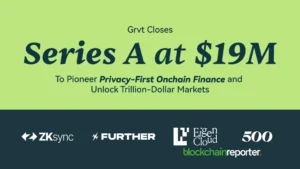
The internet is steadily shifting toward decentralization, and new technologies are emerging to make this transition possible. One area that is gaining momentum is Decentralized Physical Infrastructure Networks (DePIN). Fluence Network has become a notable name because it introduced a different approach to managing computing resources through decentralized systems. This article looks closer at how Fluence fosters community-driven infrastructure, the value of these networks, and the role that $FLT staking plays in their operation.
What is DePIN and Why does it Matter?
Decentralized Physical Infrastructure Networks (DePIN) aim to transform how digital infrastructure is managed and used. Traditionally, large companies offering centralized cloud services tend to control computing power and storage. While effective, this system has limitations, including high costs, potential outages, and control by a few entities.
DePIN provides an alternative by decentralizing the ownership and operation of these resources. DePIN networks leverage contributions from thousands (or even millions) of users and minimize reliance on a single provider by building a system that is open, auditable, and resilient against centralization.
One of the projects that are part of this change is Fluence Network, which has decentralized computing at its core. It draws on resources from data centers in over 20 countries and 1,000 active contributors, so no organization relies on this underlying system. Fluence has seen increased traction, with over 3,000 developers participating in events and hackathons to explore its cloud solutions. For comparison, centralized cloud providers like AWS rely on fewer regions, making them more vulnerable to localized outages. This model shows the growth of DePIN space, as the global Web3 market is said to expand from $3.2 billion in 2023 to $81.5 billion by 2030.
The Role of Community Networks
Community networks power Fluence. These work collaboratively, as people and firms supply processing power to maintain the system. This ensures that no central authority has a monopoly on power and that resources are shared.
That translates to cheaper and more dependable infrastructure for developers. Fluence’s decentralized network reduces infrastructure costs by up to 80% compared to centralized providers like AWS. Developers can build and deploy applications on a system supported by the community rather than be stuck within the consolidation of contract providers. As of 2024, over 2.2 million $FLT tokens have been staked by contributors to secure computing resources, demonstrating the strength of Fluence’s community-driven model.
This model enhances accessibility for users. Applications built on community networks can function more efficiently and remain available even during high demand or issues. For example, Fluence’s distributed resources can handle thousands of operations per second during high-traffic events like token launches, preventing congestion. Contributions from the global community are plugged into Fluence’s resources which means that they ensure resilience and scalability for high-traffic applications.
$FLT Staking in a Nutshell
The $FLT token plays a central role in Fluence’s ecosystem. It secures the network and ensures that the contributed computing resources are reliable and available for use.
Here’s how it works:
- Compute Contributions: Individuals or organizations can provide computing power to the Fluence network.
- Staking: To activate these resources, contributors must stake $FLT tokens. This creates an added layer of trust and accountability, as only staked resources can participate in the network.
- Incentives: Contributors who stake their tokens earn rewards for participating, incentivizing them to keep their resources online and functioning.
Since its launch, Fluence’s staking mechanism has gained significant traction, with over 54.98 million FLT tokens in circulation and a growing base of contributors. These tokens represent a substantial portion of Fluence’s total ecosystem value, emphasizing stakeholders’ trust in the network. This model aligns the interests of all participants—users, developers, and resource providers—by creating a shared responsibility for maintaining the network.
What’s Next for Web3 Infrastructure
Unfortunately, Web3 infrastructure is viewed as unnecessarily complex and has created issues for users and developers alike. Users must interact with dozens of wallets, hundreds of blockchains, and thousands of tokens to perform even the most basic tasks.
A persistent issue exists for developers: building cross-chain applications or managing resources can take significant time and effort. For example, managing liquidity across Ethereum and Solana traditionally requires complex bridging mechanisms that can be both time-consuming and costly.
Fluence provides a seamless solution to solve the problem, allowing developers to focus on building applications without worrying about what is happening behind the scenes. Fluence’s decentralized network processes thousands of transactions per second, ensuring applications are scalable and reliable. By pooling and managing resources through a decentralized network, the system helps streamline processes and simplify the user experience.
Moving Toward a Decentralized Internet
The shift toward a decentralized internet is more than just a technological trend—it is an important step to create reliable, and inclusive systems. Fluence Network is leading this change by showing how decentralized networks can overcome the challenges of traditional infrastructure. Focusing on community-driven solutions and innovative staking mechanisms provides a strong example of what the future of the internet could look like.
As Web3 grows, platforms like Fluence will make decentralized infrastructure more accessible and practical for everyone. This is just the beginning of what a genuinely decentralized internet can achieve.









